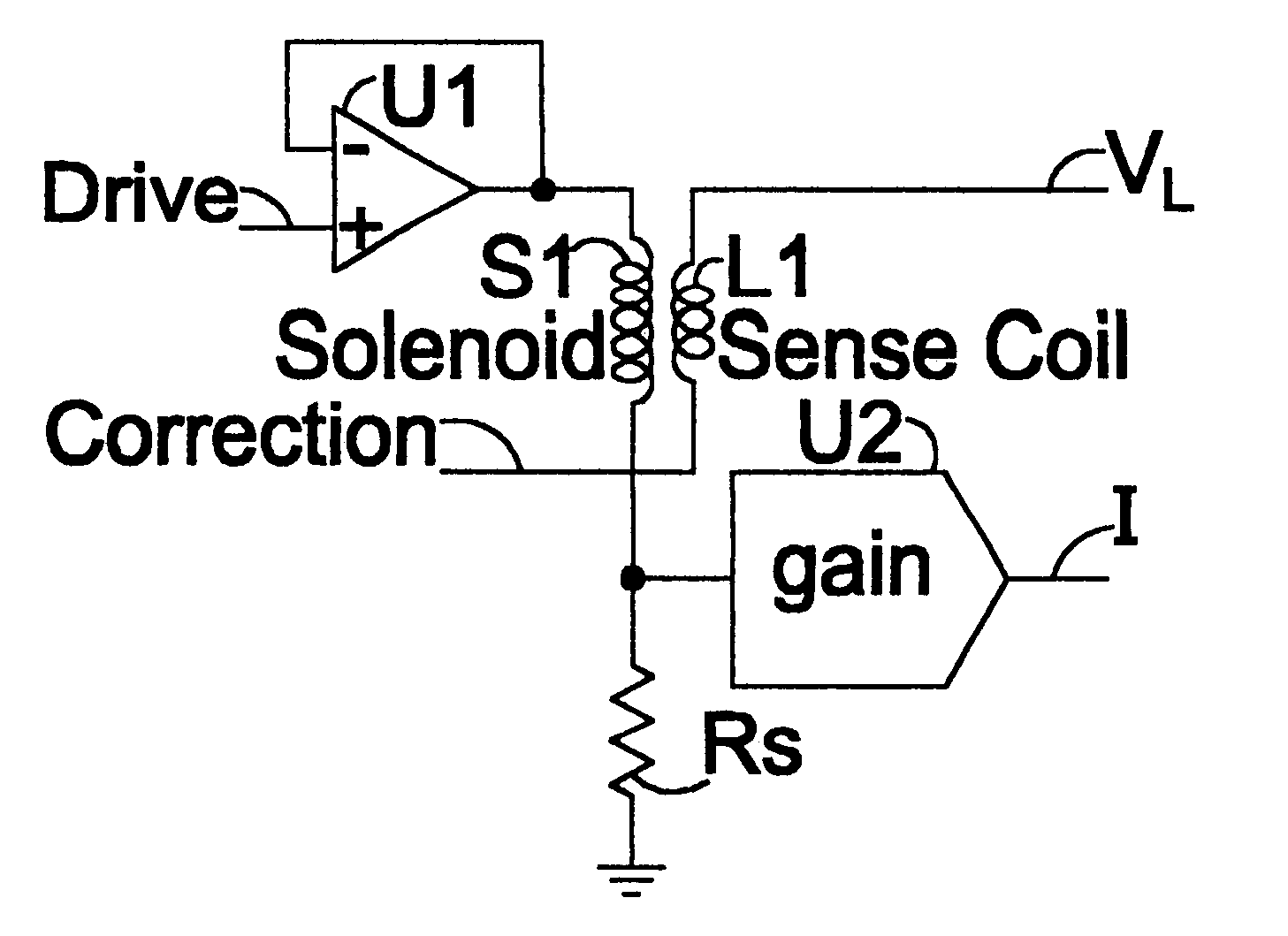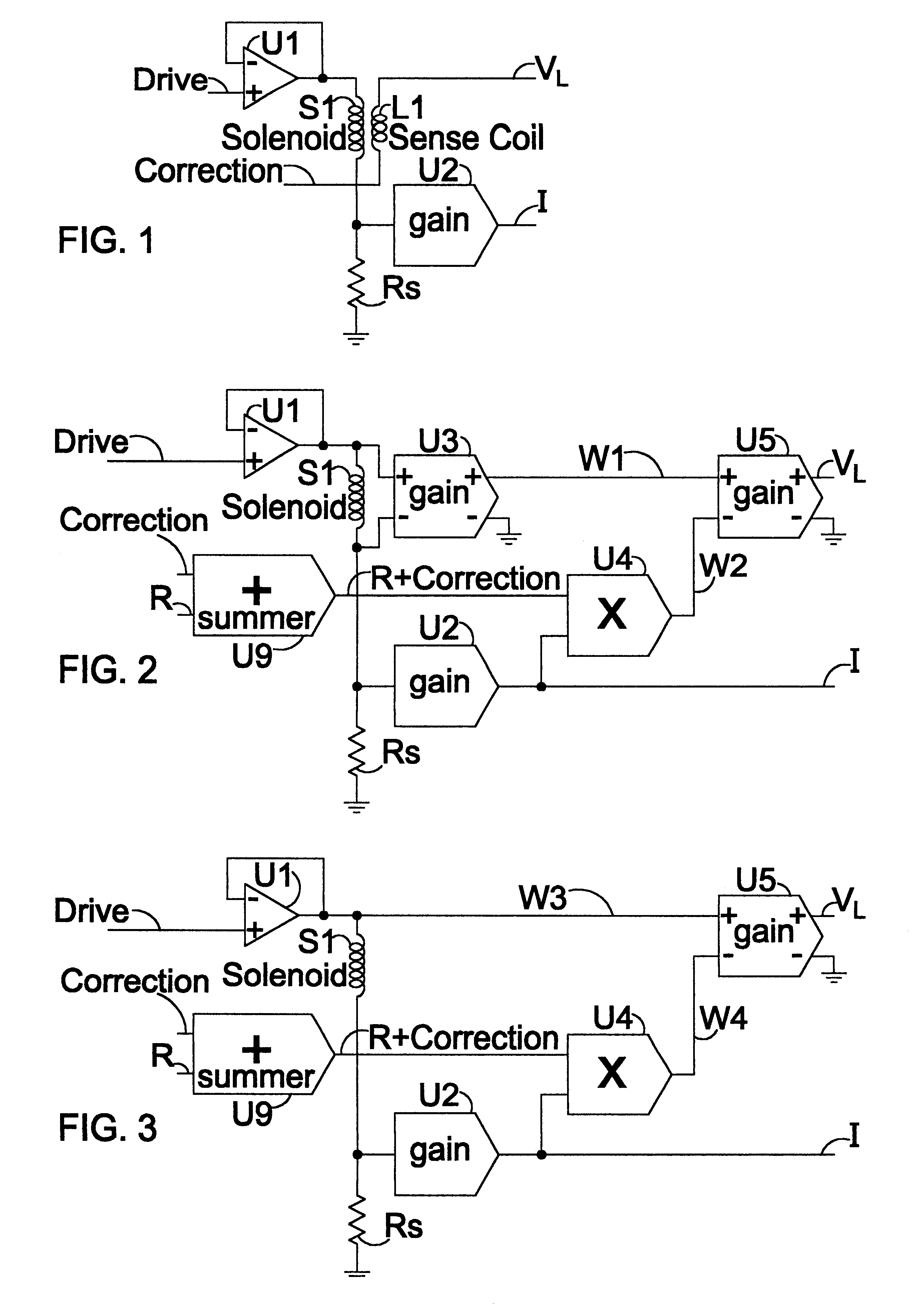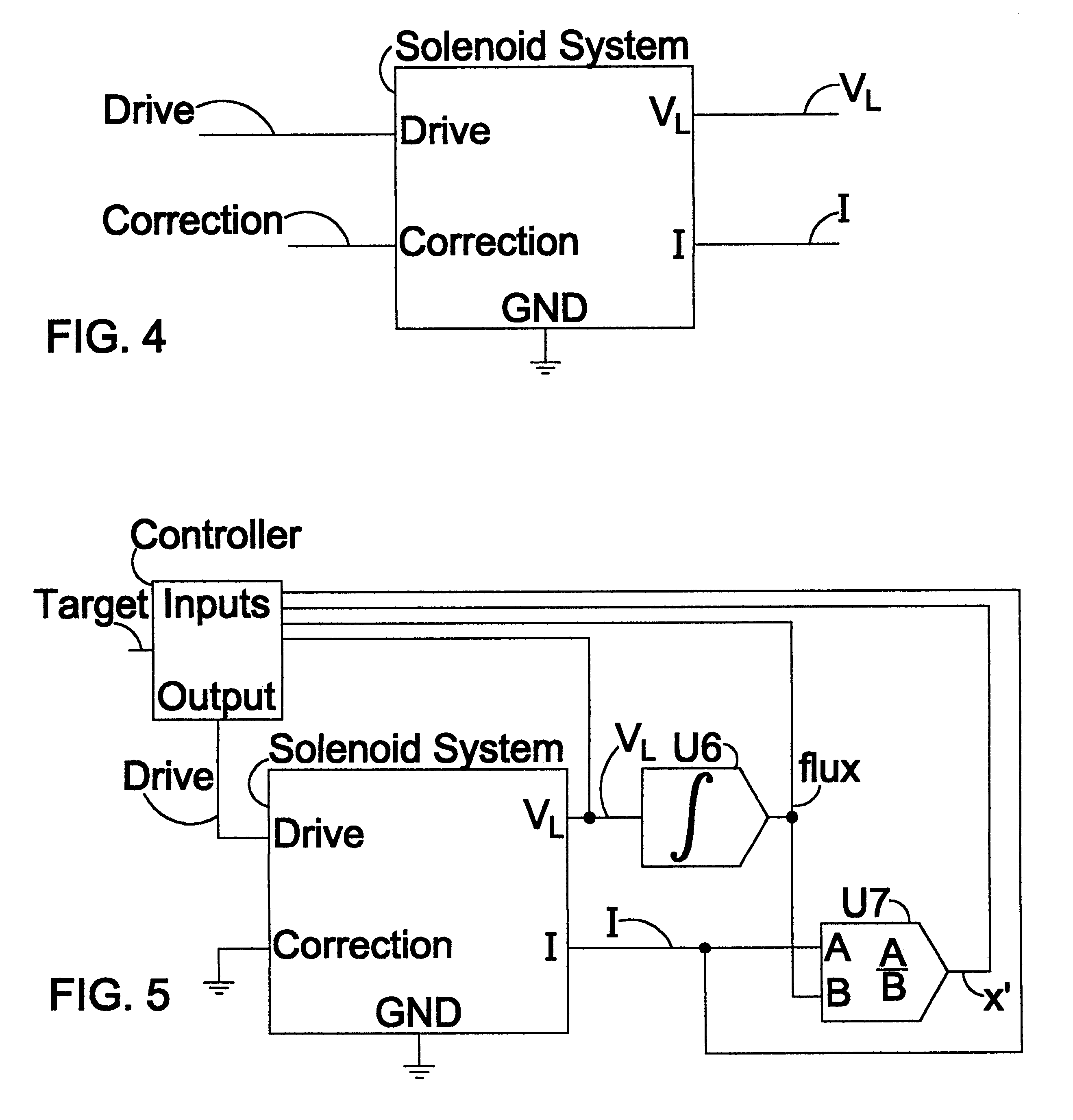System to determine solenoid position and flux without drift
a solenoid position and flux technology, applied in the direction of motor/generator/converter stopper, dynamo-electric converter control, magnetic body, etc., can solve the problems of increasing cost and complexity, and affecting the operation of solenoid position and flux, so as to reduce hardware/software and high frequency energy
- Summary
- Abstract
- Description
- Claims
- Application Information
AI Technical Summary
Problems solved by technology
Method used
Image
Examples
Embodiment Construction
The simple closed loop feedback system of FIG. 5 can be adequate in many applications. The basic method of controlling flux in the solenoid core and computing position from the current and flux signals has been described. As mentioned, this system suffers from drift in the computation of the flux signal. This computation may either be in analog or digital hardware, or it could be completely contained in the software of the Control system. In any case, it is not possible to integrate the inductive voltage V.sub.L over indefinite periods of time without an error.
Some possible error sources are:
offset voltage in an analog integrator (e.g. U6 in FIG. 5)
a / d error (gain, offset, truncation) in measuring V.sub.L
a / d error (gain, offset, truncation) in measuring I, when used to compute V.sub.L
Drift in the integrator in FIGS. 2 and 3 can be modeled accurately enough as an error in the value of the resistance (R.sub.L) of the coil. To correct drift, one just needs to correct the value of ...
PUM
| Property | Measurement | Unit |
|---|---|---|
| frequencies | aaaaa | aaaaa |
| drive voltage | aaaaa | aaaaa |
| current | aaaaa | aaaaa |
Abstract
Description
Claims
Application Information
 Login to View More
Login to View More - R&D
- Intellectual Property
- Life Sciences
- Materials
- Tech Scout
- Unparalleled Data Quality
- Higher Quality Content
- 60% Fewer Hallucinations
Browse by: Latest US Patents, China's latest patents, Technical Efficacy Thesaurus, Application Domain, Technology Topic, Popular Technical Reports.
© 2025 PatSnap. All rights reserved.Legal|Privacy policy|Modern Slavery Act Transparency Statement|Sitemap|About US| Contact US: help@patsnap.com



